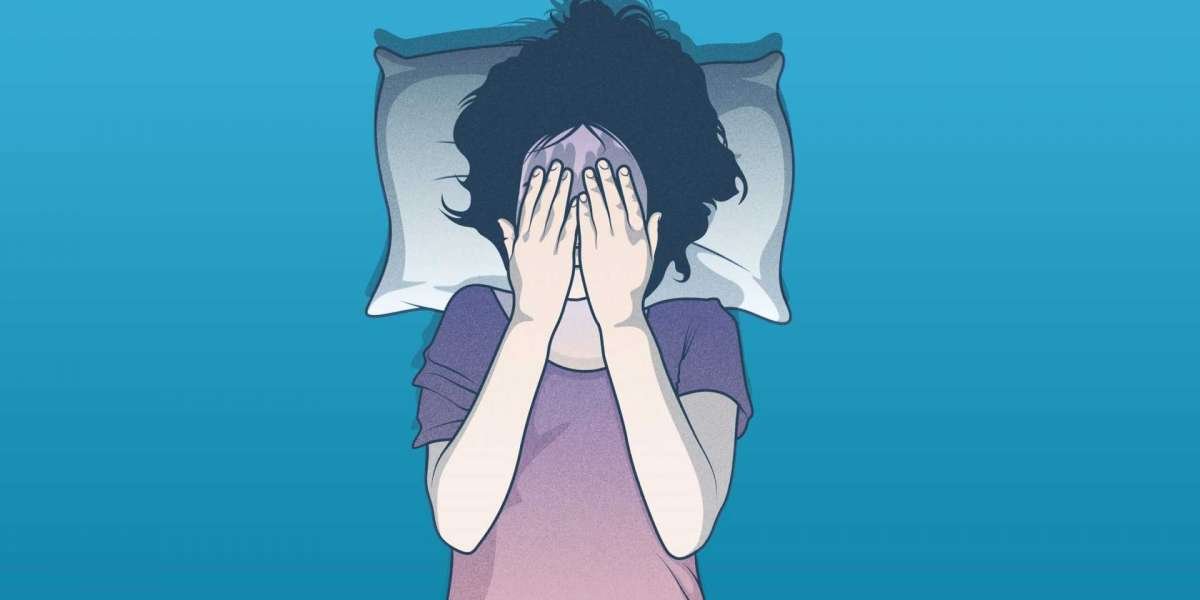The prevalence of insomnia has increased in a time when people are always connected and immersed in technology, creating both new opportunities and difficulties for sleep health. Technology's pervasiveness and the pressures of contemporary life have had a significant impact on sleep patterns and contributed to the worsening of sleep disorders. On the other hand, technological developments have also ushered in novel approaches to treating insomnia and enhancing the quality of sleep. This article examines the relationship between insomnia and the digital era, looking at how technology affects sleep, new digital interventions that help manage insomnia, and how sleep treatment is changing in a world that is becoming more and more digital.
The Effect of Technology on Sleep
Technology has completely changed the way we work, live, and communicate, but it has also had a negative impact on our circadian cycles and sleeping patterns. Due to the widespread use of computers, cellphones, tablets, and other electronic devices, people are now exposing themselves to artificial blue light and stimulating content that disrupts the onset and quality of sleep, extending screen time into the late hours of the night. Furthermore, the incessant onslaught of emails, social media updates, and notifications has raised arousal levels and maintained a hyperconnectedness that hinders the ability to decompress and rest before bed.
Exposure to Blue Light
Electronic device blue light decreases melatonin production, which is the hormone that controls the sleep-wake cycle. This leads to a delay in falling asleep and tampering with circadian rhythms. Extended exposure to blue light in the evening disrupts the body's natural circadian rhythm, making it more difficult to fall asleep and lowering the quality of your sleep.
Electronic Diversions
Digital content's accessibility and social media platforms' attractiveness frequently entice people to spend extended amounts of time in front of screens, detracting from activities that promote sleep and creating a vicious cycle of digital engagement that disrupts nighttime habits. The continuous barrage of alerts and messages makes sleep disruptions much worse by raising alertness and preventing rest.
New Digital Interventions in the Treatment of Insomnia
Technology has been linked to an increase in the treatment of insomnia , but it can also be a useful tool for treating sleep disorders and enhancing the quality of sleep. An increasing amount of studies has concentrated on using digital interventions to provide tailored, easily available, and efficient sleep aids. A wide variety of platforms and modalities are covered by these digital interventions, such as wearable technology, smartphone apps, online cognitive-behavioral therapy (CBT-I) courses, and virtual reality (VR) encounters.
Applications for Mobile
In recent years, there has been a proliferation of mobile applications that track sleep patterns, teach relaxing techniques, and promote good sleep hygiene. These applications provide people with easy access to resources and help relating to sleep. These apps frequently include functions that enable users to take proactive measures to improve their sleeping habits, like guided meditation, white noise production, sleep tracking algorithms, and personalized sleep suggestions.
Wearable Technology
Wearable technology, such as fitness trackers and smartwatches, allows for continuous monitoring of several aspects of sleep, including movement patterns, heart rate variability, sleep duration, and sleep stages. These gadgets help people better understand their sleep patterns and pinpoint the causes of sleep problems by giving them real-time feedback and insights into the quality of their sleep.
Cognitive-Behavioral Therapy (online) (CBT-I)
Digital platforms are used by online CBT-I programs to provide evidence-based treatment for insomnia, such as stimulus control, cognitive restructuring, sleep restriction, and relaxation methods. These programs enable people to obtain individualized treatment in a convenient and approachable format. They often consist of interactive modules, self-monitoring tools, and therapist support.
Events in Virtual Reality (VR)
Technology related to virtual reality (VR) has become a cutting-edge tool for treating sleep disorders and encouraging relaxation. Before going to bed, VR experiences that create a sense of presence in peaceful settings, like serene landscapes or engrossing nature scenes, can lower arousal levels and promote relaxation, assisting people in entering a restful state that promotes sleep.
The Changing Face of Sleep Therapy
A paradigm shift in the management and treatment of insomnia has been brought about by the incorporation of technology into sleep therapy. The stigma attached to obtaining treatment for sleep problems, long wait periods, and restricted access to specialized clinicians are just a few of the obstacles to traditional care that digital interventions offer scalable, affordable alternatives to. Through the utilization of technology, people can acquire customized therapies, monitor their advancement, and obtain remote support, enabling them to take charge of their sleep health and enhance their general quality of life.
Personalized Methods of Care
Digital treatments have the capacity to provide individualized treatment plans that focus on each patient's unique needs, preferences, and sleep habits. These treatments can adjust and improve therapy protocols in real-time, maximizing efficacy and results for each user, by utilizing machine learning and data analytics.
Convenience and Accessibility
Digital treatments are especially appealing to people with busy schedules or limited access to traditional healthcare resources because of their accessibility and ease. Digital interventions democratize access to evidence-based sleep therapies and enable people to prioritize their sleep health by eliminating care obstacles including geographic distance, transportation constraints, and scheduling conflicts.
Combining Conventional Care with Integration
Digital treatments are a potential way to manage insomnia , but they work best when combined with normal care methods like doctor visits, sleep evaluations, and detailed treatment regimens. Collaborative care models have the potential to optimize technological advantages while guaranteeing individualized and comprehensive therapy for patients suffering from insomnia. These models integrate digital treatments with in-person assistance from healthcare experts.
In summary
The digital age brings with it opportunities and difficulties for sleep health related to insomnia. Technology shows potential as a tool for treating insomnia and enhancing sleep quality, even though it has also contributed to the rise in sleep disruptions. People can obtain individualized, evidence-based therapies through the use of digital interventions, giving them the ability to take charge of their sleep health and obtain restorative and revitalizing sleep. The incorporation of digital treatments into standard care procedures is set to transform the field of sleep medicine as technology advances, providing scalable, easily available, and efficacious options for people suffering from insomnia in an increasingly digital world.



